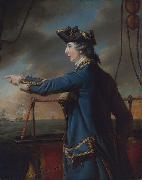Wholesale Oil Painting No Minimum |
|||||||||||
|
|
|||||||||||

|
|||||||||||
|
|
|
||||||||
Francis Cotes(20 May 1726 - 16 July 1770) was an English painter, one of the pioneers of English pastel painting, and a founder member of the Royal Academy in 1768. He was born in London, the eldest son of Robert Cotes, an apothecary (Francis's younger brother Samuel Cotes (1734 - 1818) also became an artist, specialising in miniatures). Cotes trained with portrait painter George Knapton (1698 - 1778) before setting up his own business in his father's business premises in London's Cork Streetelearning, incidentally, much about chemistry to inform his making of pastels. An admirer of the pastel drawings of Rosalba Carriera, Cotes concentrated on works in pastel and crayon (some of which became well-known as engravings). After pushing crayon to its limit as a mediumealthough he was never to abandon it entirelye - otes turned to oil painting as a means of developing his style in larger-scale works. In his most successful paintings, particularly those of the early 1760s, the oil paint is thinly applied, in imitation of his pastel technique, and imbued with charm, inviting comparisons with Allan Ramsay (1713 - 1784) and Sir Joshua Reynolds. They have clarity and warmth and possess a remarkable attention to costume. In 1763, he bought a large house (later occupied by George Romney) in Cavendish Square. One of the most fashionable portrait painters of his day, Cotes helped found the Society of Artists and became its director in 1765. At the peak of his powers, Cotes was invited to become one of the first members of the Royal Academy, but died just two years later, aged 44, in Richmond. He also taught pastel skills to John Russell, and his skills were described in book The Elements of Painting with Crayon. |
||||||||
|
|
||||||||
Edward Knowles
Edward Knowles Painting ID:: 85334 |
oil on canvas
127 x 100.3 cm
Date 18th century
cyf oil on canvas 127 x 100.3 cm Date 18th century cyf |
|||||||
|
|
||||||||
|
Anthony Van Dyck Dutch 1599-1641 Anthony Van Dyck Locations Flemish painter and draughtsman, active also in Italy and England. He was the leading Flemish painter after Rubens in the first half of the 17th century and in the 18th century was often considered no less than his match. A number of van Dyck studies in oil of characterful heads were included in Rubens estate inventory in 1640, where they were distinguished neither in quality nor in purpose from those stocked by the older master. Although frustrated as a designer of tapestry and, with an almost solitary exception, as a deviser of palatial decoration, van Dyck succeeded brilliantly as an etcher. He was also skilled at organizing reproductive engravers in Antwerp to publish his works, in particular The Iconography (c. 1632-44), comprising scores of contemporary etched and engraved portraits, eventually numbering 100, by which election he revived the Renaissance tradition of promoting images of uomini illustri. His fame as a portrait painter in the cities of the southern Netherlands, as well as in London, Genoa, Rome and Palermo, has never been outshone; and from at least the early 18th century his full-length portraits were especially prized in Genoese, British and Flemish houses, where they were appreciated as much for their own sake as for the identities and families of the sitters. Edward Knowles oil on canvas 114.5 x 94 cm cyf |
||||||||
|
|
||||||||
|
Prev Next
|
||||||||
|
|
||||||||
|
Related Paintings to Anthony Van Dyck :. |
||||||||
|
|
||||||||
|
CONTACT US |

